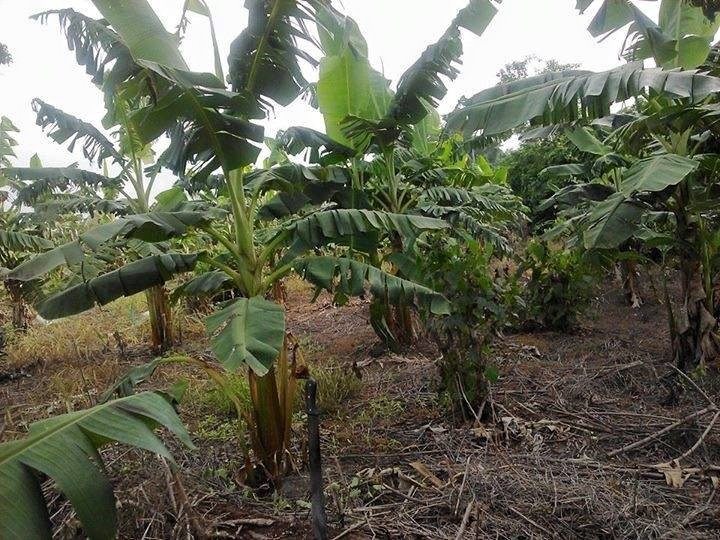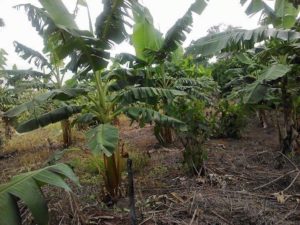Plant diseases are of great economic importance in crop production. Plant disease is the deviation from the normal state of health of the plant, resulting in the reduction of farm yield and crop failure in severe cases.
There are different methods of plant disease management; in this article, you will learn each method and determine the best one to adopt on your farm.
The main effect of plant diseases on crop production is a reduction in the quantity of farm produce while pests reduce both the quality and quantity of the farm produce. Both pests and plant diseases must be controlled or managed to achieve a reasonable yield from the farm.
How plant diseases develop
Before we delve into methods of controlling plant diseases; it is important we understand the plant disease cycle and how plant diseases emerge.
Plant disease cycle is the succession of events that occur during the development of diseases in a plant. Plant diseases do not just manifest, there are three (3) conditions that must be present for any plant disease to manifest. These conditions are:
- A susceptible plant.
- A virulent pathogen.
- A favorable environment.
A plant disease will emerge ONLY if these three conditions are present.
Let me explain how these conditions interact for a better understanding of disease development in plants.
The plant to be infected must be susceptible. Susceptible in the sense that it would have been physiologically weak either as a result of a nutrient deficiency or water stress. This state is a susceptibility and the first stage of plant disease development.
Plant diseases are caused by organisms called pathogens and they must be virulent. A virulent pathogen is a pathogen that is capable of causing different plant diseases. Some pathogens may lack the ability to cause disease, probably as a result of reduced vigor. Bacterial diseases in plants occur when pathogens penetrate the plants through openings of the plant tissues; such pathogen is said to be virulent.
The environment where the plant and pathogen will interact must be favorable for any plant disease to occur. Environment plays a vital role in plant disease management. A favorable environment that aids disease development is either a water-logged area or when the plot has been overtaken by weeds. Most fungal diseases in plants are caused by the water-logging situation.
If any of these conditions is missing, disease will not occur even if two conditions from the aforementioned conditions are present.
From this analysis on plant disease management, a farm is supposed to record a very negligible disease condition. Truly, plant disease cannot be totally eradicated, but it can be managed and reduced below an economic threshold level.
This can be done without spending much on disease control if a farmer can willingly choose a particular condition or two conditions as his or her disease management strategies and ensures they do not favor the development of plant disease, then the farmer will harvest and earn more.
A farmer has control over two conditions: the susceptibility of the plant and the environment. Imagine a situation where the farmer focuses on only the environment, through controlling irrigation and drainage to discourage water-logging situation or regular weeding to eradicate any plant pest-host; such farm will experience a disease-free operation. Or through fortification of the plants with adequate nutrients or ensuring there is an adequate supply of water to avoid water stress.
A better understanding of this plant disease management concept can make a farmer cultivates with little or no disease emergence record, conversely increasing the quality and quantity and ultimately the farm profit.
How to control plant diseases
In a situation where plant diseases have emerged or a particular plant disease is endemic to the environment. There are several proven ways diseases can be controlled through various plant pest control methods.
Plant disease management methods are classified into three (3) general principles of plant disease control. They are also called principles of crop protection; they are:
- Exclusion principles
- Eradication principles
- Suppression principles
Now let’s see how these principles of plant disease management work:
1. Exclusion principles: These principles of disease control are adopted in anticipation of the plant disease. They aim at avoiding and preventing the spread of the disease; they involve the following cultural practices:
- Careful selection of planting site.
- Using adequate planting distance.
- Planting improved and pathogen-free seeds.
- Use of biosecurity and legislation to restrict movement within the farm.
- Selection of healthy and vigorous seeds.
- An adequate supply of nutrients.
- Planting under favorable soil pH.
- Biological control of plant diseases using natural enemy of the pest.
2. Eradication principles: These principles of crop protection are adopted when plant disease has emerged. They aim at killing or eliminating and outright removal of pathogens from the farm. This can be achieved through:
- Cultural control methods: They are usually adopted in an organic farm, cultural control of plant diseases includes: proper land preparation techniques, crop rotation, bush fallowing, flooding, weeding, etc. can be adopted. It is another physical control of plant diseases.
- Chemical treatment: These principles of plant disease control involve the use of synthetic materials or chemical substances to control plant diseases and pathogens; it involves the use of pesticide, soil fumigants, seed treatment and plant fungus treatment using fungicides. This can be adopted in an inorganic farm.
3. Suppression principle: This can be adopted in both an organic or inorganic farm as plant disease control measure. It is adopted when a plant disease has emerged. It aims to keep the population of the pathogen below an economic threshold level, thereby making the disease unnoticed.
Lastly, plant diseases can also be controlled through integrated plant disease management. It involves the combination of the two or more methods of plant disease management or principles.
In conclusion:
These are the methods of plant disease management to adopt in both organic and inorganic farm. It is better to prevent and avoid than to eradicate. Prevention of plant disease is often cheaper compare to plant disease diagnosis and disease control. As a good farm manager, you must always ensure your farm is healthy by adopting any of the aforementioned plant disease control methods.
What to do next?
- Share your view by dropping a comment in the comment box below.
- Share this link by using the share button above the post.
- Subscribe to this blog by email using the subscription box above.


